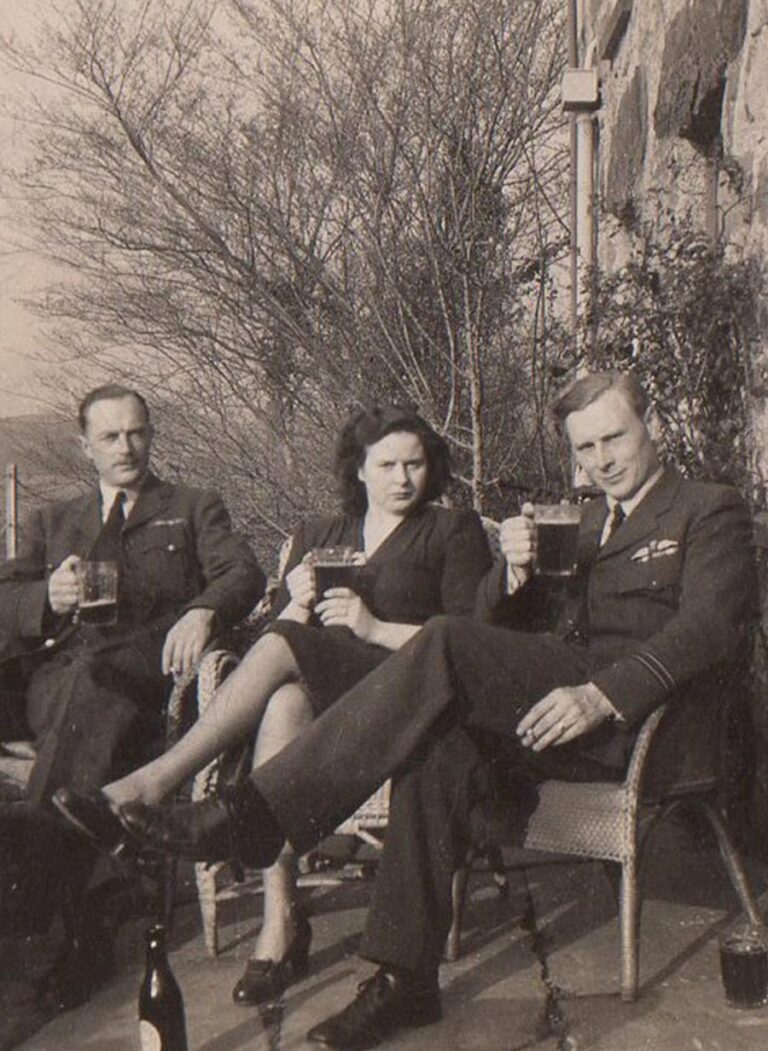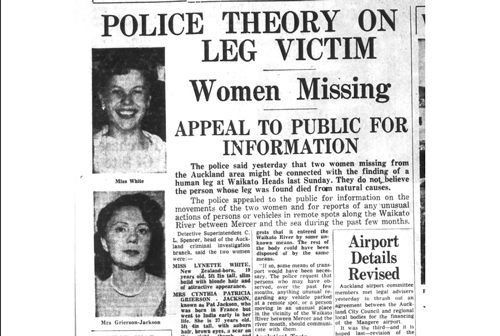

The mystery of the detached leg
A locked room. A hastily-packed suitcase. A bloody scalpel. And plenty of questions.
By Scott Bainbridge
For tenants of the apartment complex in Grafton, something did not seem right with the occupants of one of the flats. The married couple had only moved in one month earlier, and were somewhat reclusive. One evening two weeks previously, neighbours heard the couple arguing loudly, but from that day on they never saw the woman again. The man continued to reside there and did not seem out of character.
On Thursday 5 May 1960, worried neighbours contacted the landlord after the man had not been seen for five days. A light had been left switched on and a radio continually playing.
When Mt Eden police forced a window open, they were not prepared for the gruesome scene awaiting them. Scattered around the small room were a dozen flagons containing beer, wine and sherry. There were bottles and jars containing olive oil, glycerine and other unidentifiable liquids.
Blood covered the floor. In the corner was a suitcase hastily packed with women’s clothing. On the dressing table were 11 pep pills, a tumbler and beaker with sediment of what was later revealed to be cyanide, as well as surgical dressings. Among bloodied papers on the floor was a surgeon’s scalpel.
Lifting a blood-stained blanket revealed the dead body of 39-year-old Michael Grierson-Jackson, helicopter pilot. The deceased was naked. On examination he had a cut one inch in length in the right of his scrotum which was swollen with blood.

Blood covered the floor. In the corner was a suitcase hastily packed with women’s clothing. On the dressing table were 11 pep pills, a tumbler and beaker with sediment of what was later revealed to be cyanide, as well as surgical dressings.
He was lying in a blood-drenched towel, and a considerable amount of blood had been mopped up and rolled up in several newspapers and cloths which lay on the floor by the bed.
Detectives suspected murder, and quickly moved to contain the scene. This was discounted when it was confirmed the windows and door to the room were locked from the inside, making it impossible for a killer to escape. Pathologist Dr Doyle concluded Grierson-Jackson had performed the castration himself and died of shock and loss of blood. The scrotum was distended by a cupful of fresh blood cyanide had been detected in his stomach, but did not indicate a fatal dose.
After establishing his identity, police put out an all-station radio alert requesting the deceased’s wife, 37-year-old Cynthia Patricia Grierson-Jackson, known as Pat, to contact them. Police examined the apartment room and located a diary kept by Pat, with the last entry recorded in mid-April.
Michael Grierson-Jackson was born in Bedford, England, in 1921, to a British Army schoolmaster and his wife. He had a strict upbringing. Military records confirmed he joined the RAF at a young age, and quickly rose to the rank of squadron leader during the Second World War. In the latter stages of the war, he joined the Royal Canadian Air Force where he served with distinction. After the war he spent several years with the Royal Australian Air Force. Pat was born in France, but spent much of her life in India. She could speak English, French and an Indian dialect fluently, and was a skilled dressmaker.
The couple met in Calcutta, and married there in 1958. They moved to Australia but shifted to New Zealand one year later. They initially settled in Whanganui, where Michael secured employment as a top-dressing pilot for Rudnick Helicopters. They then moved to Mt Maunganui and he was able to retain his job.
Margaret Watson met the couple soon after they moved to Mt Maunganui. “Mike was a lovely warm-hearted man, the life of the party. Pat was more reserved. She could be somewhat distant, but I think that was due to her upbringing. Both were very cultured and their accents gave them that air of snobbishness, but they were very down to earth.
“We nicknamed Pat the ‘Empress’ or ‘Indian Princess,’ which she found most amusing. She always dressed stylishly, trying to emulate Jackie Kennedy. She liked to show off exotic dresses and outfits she had brought over from India; some she had even designed and made. She had such an incredible talent.”
Despite only being married a year, there were problems. Michael had several female friends and made no attempt to hide them from his wife. This didn’t come as a surprise to Margaret.
“Mike was confident and such a flirt. I can’t say I knew first hand he was cheating, but I had my suspicions. But in those days you kept things to yourself. With Pat, it was difficult to tell whether she knew something was going on and she was tolerating it, or whether she thought Mike was just being Mike and everything was above board.”
With few close friends, Pat recorded her thoughts in a diary, including detailed accounts of being physically abused by her husband. This revelation came as a surprise to those who knew them. On the morning of 29 October 1959, Michael and his mechanical assistant, Noel Waugh, were undertaking gorse-spraying in Te Kohanga, near Tuakau. At 6.45am, the Bell 47D helicopter had just taken off for its fourth spray when the tail collapsed. The helicopter plummeted and crashed on its landing gear. Waugh rushed over.
“The morning was calm with no wind, and the visual effects of the crash were spectacular. Mike had just lifted off when the whole tail boom section departed from the mainframe, and the engine speed increased dramatically as it no longer had to drive the tail rotor. With such high centrifugal forces, Mike could not reduce engine power. The machine only had two bucket seats and the force was so great, Mike’s feet pushed out the rudder pedals and his seat bent in a half hop to impale him over the cyclic control stick which broke his ribs.”
Michael was taken to Middlemore Hospital where he was treated for broken ribs and back injuries not thought to be serious. Noel Waugh believes the crash did not affect Mike’s state of mind, but one might argue whether this event was a turning point as his personality soon took on a dark side.
